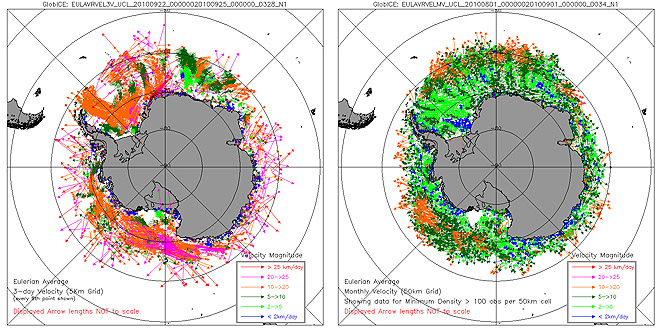The GlobICE processor was adapted as a prototype to process Antarctic sea ice dynamics for two months of data from the southern hemisphere winter of 2010. Users should note the following differences between GlobICE Arctic products and the prototype Antarctic products:
• For Antarctica we needed to use a different polar-stereo projection for the gridded products, centred on the South Pole. Click here for a definition of the projection used.
• No external low resolution sea ice drift data (such as the SSM/I derived drift vectors available in the Arctic) were available for the prototype period, and so the GlobICE processor was required to search a much larger area to find drift locations in the imagery than was required in the Arctic (where an initial low resolution estimate narrowed the search area). As a result of the larger search areas the possibility of erroneous drift detection due to false matching is increased in the Antarctic.
• Antarctica has a very different geography compared to the Arctic (which is a mainly enclosed sea). Sea ice around Antarctica is known to be significantly thinner (typically <2m thick compared to 2-5m in the Arctic), less ridged and subject to higher drift velocities and greater snow cover than in the Arctic. Heavy snow cover can sink thin sea ice under water. As a result of this, in areas such as the sea to the East of Antarctica where there is predominantly thin ice, tracking by image correlation is less successful as either the surface patterns change too much over the tracking period or there are not enough unique features to track.
Some sample data for the Antarctic are shown below.

